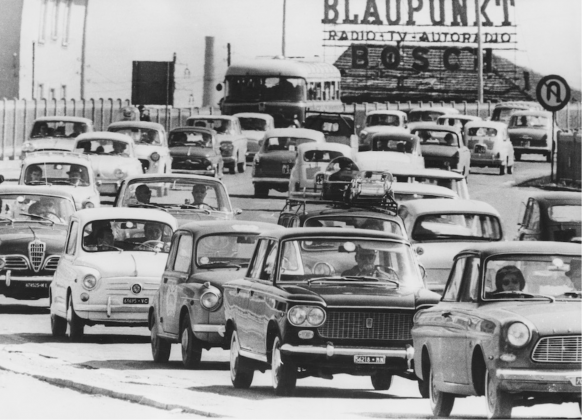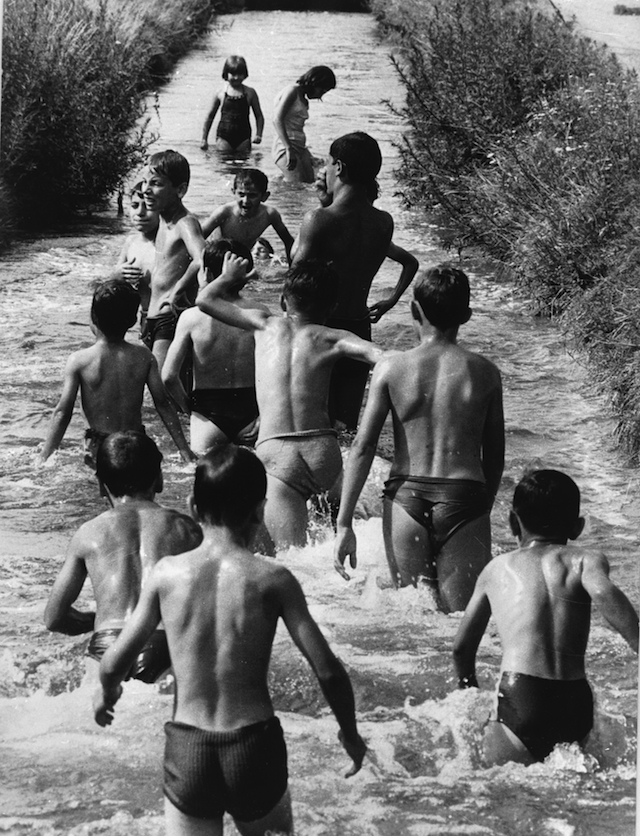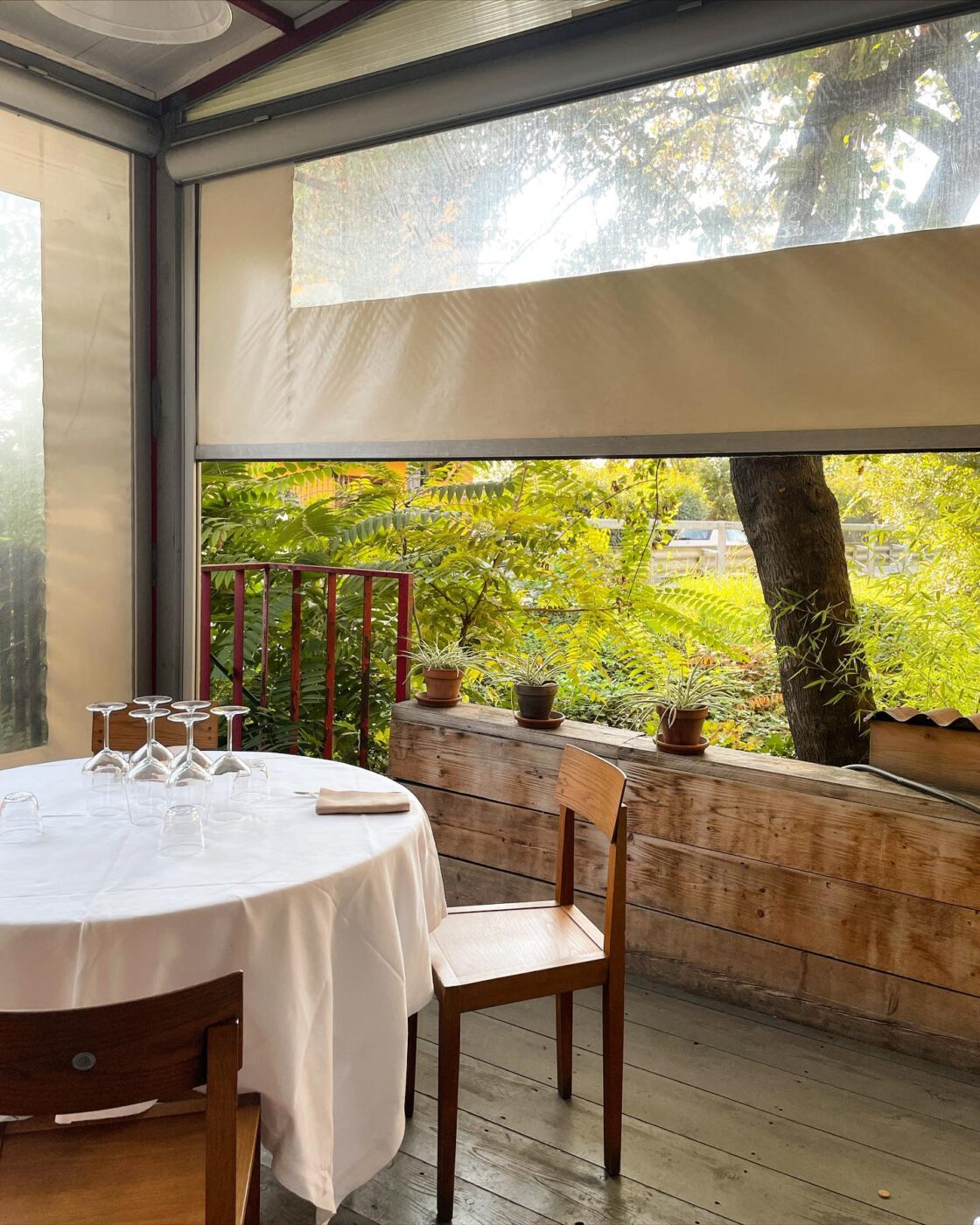“Now you’re officially Milanese,” a friend had responded when I giddily gushed over how August in the Lombard capital stole my heart. In previous years, I did as I thought the Milanesi did: bolted from the seemingly shut-down ghost town. Whether I had plans to venture abroad or beach bum in Liguria, I just couldn’t bring myself to bear the stigma of passing the sacred summer holiday month in deadsville. What can I say? I was impressionable, and it seemed like the cool thing to do–in both senses, as the sweltering August heat rendered my AC-free digs oppressive.
Plus, the idea of an August summer vacation radiated pure Italianità. In Italy, no one has ever asked me if I’m going on vacation, but what I’m doing for vacation: “Cosa fai per le vacanze?” The Italians welcome and cherish their time out of the office, and I always have and always will admire that–my native America could learn a thing or two from them about work-life balance.
Yet, the first August I didn’t skip town revealed a curiously alluring side of Milan. What I used to think of as an eerie, apocalyptic backdrop—a true crime podcast episode waiting to happen– instead felt liberating, meditative, and aspirational. Not only did Milan seem like it was all mine, but it also wasn’t as abandoned as I had presumptuously assumed. And plenty of Milanesi agree.
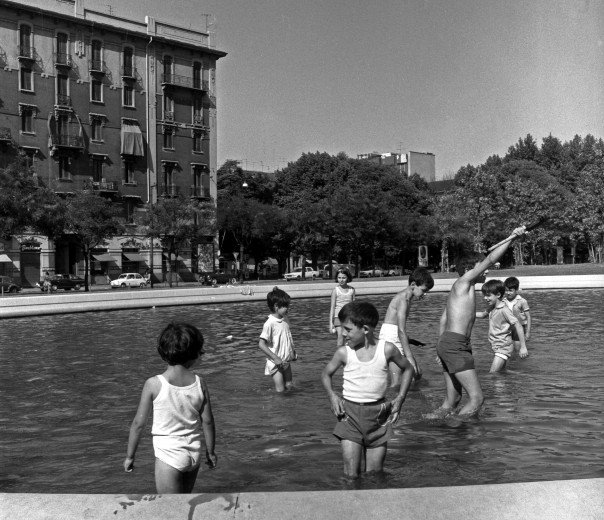
LE VACANZE
Once upon a time in New York, my employee “benefits” comprised a measly ten annual vacation days (if I was lucky!)–and that’s considered generous, as there’s no federal law that regulates paid time off.
Full-time employees in Italy acquire ample vacation time: at least 20 days a year (when I worked full time, I had 25) plus ten national holidays, with some regional feast days thrown in for good measure. In Milan, for example, Saint Ambrose Day (December 7th) and La Festa del Commercio (August 16th) count as two additional days off. Plus, employees receive Riduzione Orario di Lavoro (Working Time Reduction), 104 annual hours they can deduct from, say, for leaving early, arriving late, or popping out for a doctor’s appointment. Sick days? Unlimited so long as they can produce a doctor’s note–an about-face from my New York experiences undercut with a tacit understanding that one never taps into their allotted sick days unless hospitalized or dying.
An Italian colleague had once lived in New York, and he always carried on about how much he missed summer Fridays, the American warm-weather tradition of ending the work week at 2 PM. But I couldn’t sympathize–who needed summer Fridays when they had August? Yet the more I grew familiar with Italian August, the more it started to lose its luster–working in August wasn’t as sacrilegious or unbearable as I had initially believed.
The August holiday, which averages three weeks, is obligatory and comes out of employees’ allotted vacation days. This limits most Italians’ paid time off to the summer month while dimming their vacation prospects for another time of year. This peak travel season begets astronomical prices and pressures ambitious travelers into cramming multiple trips into a finite window. I know a couple who left for Sardinia a day after they returned from two weeks in Asia; otherwise, they would have lost their vacation time along with the opportunity for one of these trips.
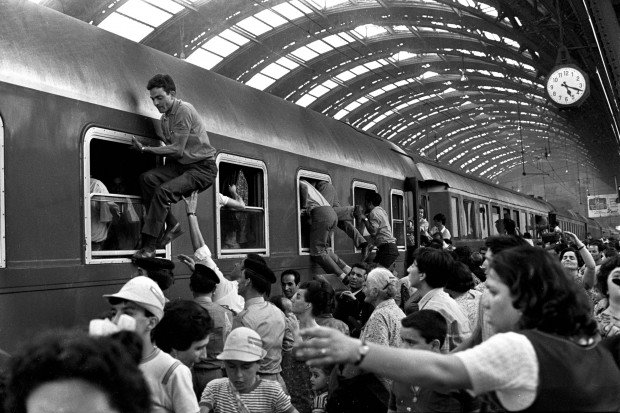
Ferragosto, Milano, 1970
SIMULTANEOUS VACATION OR NOT?
It’s not unusual for Milan-based companies to operate in August–the travel start-up where I worked for four years, a 24/7 operation, never closed up shop. Still, no one, myself included, was ever denied vacation time in August. We just chose it on our terms.
There’s a case to be made for how simultaneous August vacation efficiently keeps the staff on the same page. No one has to pull anyone’s weight if everyone follows the same calendar. But my inner New Yorker can’t resist playing devil’s advocate–before my annual one-week vacation, I’d create a list of tasks for my colleagues to handle in my absence. Accordingly, they did the same when they were heading out of town.
The devil’s advocate in you might be thinking an American who took one work week off, once a year, has zero credibility advocating for optional August holidays. That’s valid–five days out of the office is a stark contrast to 15. But, as not every Italian workplace closes in August, the idea of separate vacations doesn’t completely diverge from Italian office culture. Further, those who chose their vacation are usually out of the office for at least two weeks, and someone has to cover for them while they’re away.
MILAN, OPEN CITY
Let’s be honest–no matter how deserted Milan, or any other major Italian city, may appear, it never really retreats into a ghost town come August (except, perhaps, on the 15th). It still has to function. Restaurants near the center, supermarkets, and museums stay open. Law enforcement officers patrol the streets, taxi drivers make their rounds, pharmacists fill prescriptions, journalists report the news, brokers trade stocks, and doctors and nurses care for their hospital patients and deliver babies.
Those in Milan have to eat, and they’re not confined to slim pickings for a decent meal. Cantine Isola, Erba Brusca, and Un Posto a Milano have been synonymous with August openings for as long as I can remember, along with pretty much all of Chinatown. In recent years, others have followed their lead, some implementing modified hours of operation, like Tipografia Alimentare. The food hub and bistrot skirting the Naviglio Martesana in the Gorla district typically opens from breakfast to dinner with everything in between. Though the colorful northeast neighborhood tends to stagnate come August, enough locals hang back for owner Martina Miccione to open in the evenings.
In summers past, the Michelin-starred L’Alchimia stayed open, as did Immorale, chef Luca Leone Zampa’s modern Italian bistrot, and he intends to follow the same model going forward. “Ours is a choice of hospitality toward those who stay in Milan in August, tourists or residents,” Zampa explains. “We don’t understand why Italy has to stop for a whole month, much less Milan, which, being an international metropolis, speaks for itself.”
For the last few years, Matteo and Salvatore Aloe’s sourdough pies were fired all August long at not only all five of Milan’s Berberè outposts, but also at their Castel Maggiore, Florence, Rome, Turin, and Verona locations. Why? “Because we believe the cities should be experienced year-round.”
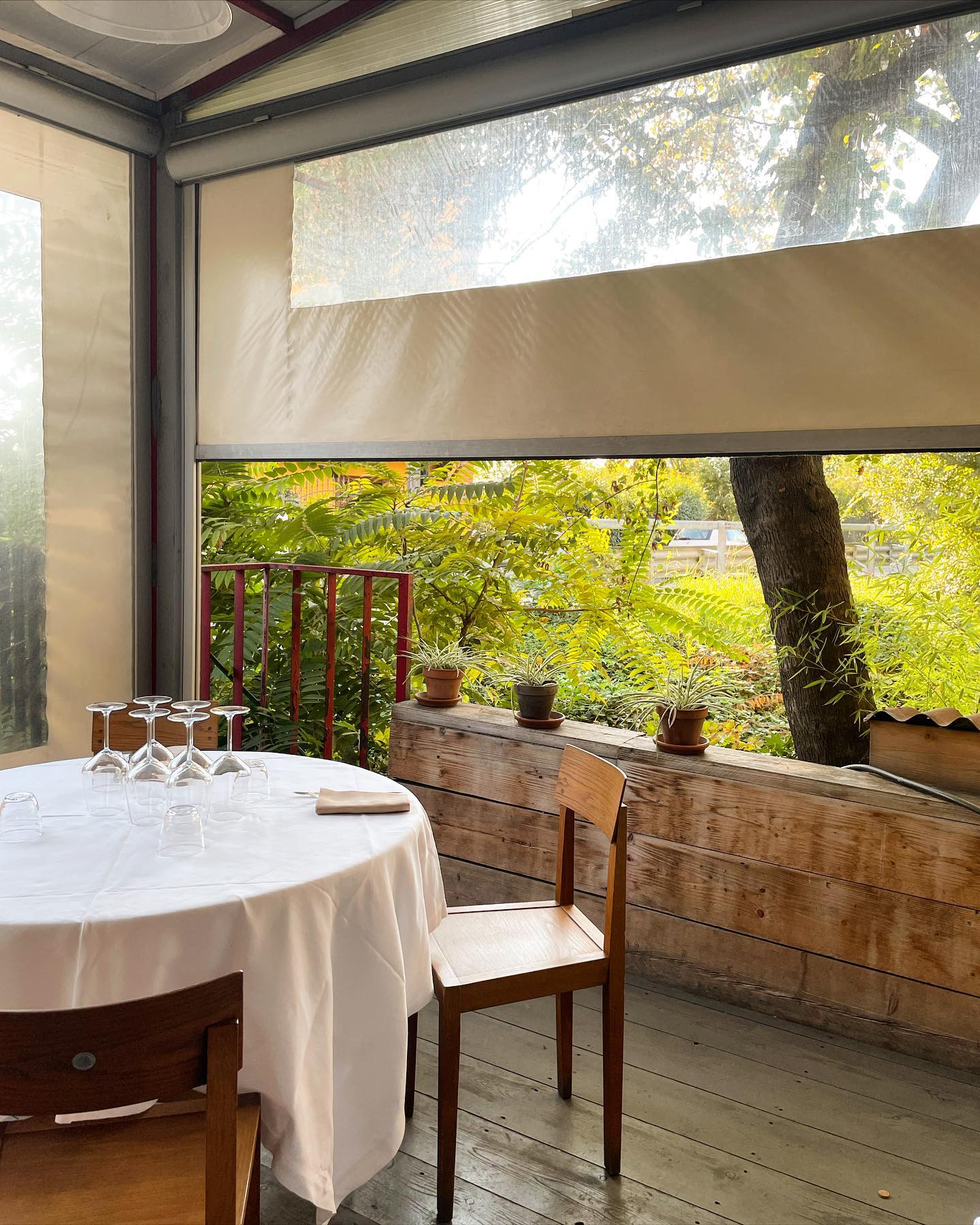
Courtesy of Erba Brusca
FURTHER AFIELD
The Milanesi, and other city dwellers for that matter, aren’t the only ones toiling away in August. Outside the cities, winemakers tend to the vines for the forthcoming harvest and the 600+ Autogrill locations remain at the disposal of all roadtrippers. And somebody has to cater to all the Italians by the sea–the perfectly lined rows of colorful ombrellone don’t open themselves every morning. Beach club staff, restaurateurs, chefs, hotel and shop owners, water sports organizers, and boat captains are just a handful of the individuals who keep the needle moving. It’s grueling work. A good part of these businesses open from at least April to October, affording most owners between four and five months off during the off-season.
American transplant Christine Mitchell co-owns La Cantina di Miky in Cinque Terre’s Monterosso al Mare with her husband, Manuel De Fina. They generally open the restaurant in March or April and close in October or November. As hectic as the summer season is, she wouldn’t swap working in August to join the other vacationers on holiday–especially having had the opportunity to travel the world off-peak. While business owners may benefit from this seasonal work cycle, she admits it takes its toll on the staff as most can’t afford to take the winter off. Instead, they pack their bags and head to the mountains for an equally hectic season of work on the slopes with little, if any, downtime in between.
On the other end of the Italian Riviera, chef Diego Pani of Ristorante Marco Polo in Ventimiglia says he never has or never would take a vacation in August. Marco Polo is open year-round, catering primarily to Italian, Swedish, and Dutch visitors, along with French day-trippers during summer. He usually closes in February “to find summer in another hemisphere,” but in September, he treats himself to a few days at the beach in Versilia.
In nearby Bordighera, Federico Bertaina manages several Airbnb properties. He’s never vacationed in August–he could get away for a week or two because his guests are long-term, but he prefers June or September for a classic Italian vacation or November if he’s going abroad.
Bertaina admits that he has reservations about Italy’s August-centric vacation system, starting with the prices: it costs substantially more to rent one of his apartments in August than in June. Plus, he finds the long-term effects of the busy season concerning and thinks it would be more efficient if vacation time were distributed evenly over the summer months. “It’s a big problem because it’s not sustainable, particularly in Bordighera.”
He explains that the cycle weighs on the local business owners, from restaurateurs to those who oversee beach activities and, subsequently, their staff. It’s overwhelming, and Bertaina believes Italy needs a more sustainable tourism structure.
THE GRAY AREA
Florence native Eleonora Bernini spent seven-plus years working in Germany, where employees also acquire a minimum of 20 annual vacation days, but August isn’t mandatory. When she returned to Florence, she joined her family business Mokaflor Torrefazione as the export manager. As the third generation to step into a role, she considered changing the vacation policy and dug a little deeper to understand the nuances.
“Firstly, it’s crucial to note that 76% of Italian companies fall under the category of ‘PMI’ (Piccole Medie Imprese), which translates to small and medium-sized enterprises,” she explains, adding that employers tend to prefer that the staff vacation all at once. These typical family-owned businesses comprise just 20 to 30 employees, each shouldering a role so crucial that it’s challenging to pick up the slack of an absent one. Also, since their Italian partner companies holiday in August, the work cycle is paused anyway and grants everyone a worry-free vacation headspace.
“I find myself less convinced that the tradition of taking the entire month of August off is inherently flawed,” Bernini notes. “Perhaps a slight modification, such as reducing the duration to two weeks instead, could be considered. Who knows if this longstanding Italian tradition will ever undergo a transformative change?”
All things considered, I believe Italians do it better when it comes to most things, vacation being no exception. I also believe that there’s always room for improvement. If I had my way at an office job, I’d marry the best of both worlds, coupling American summer Fridays with Italy’s paid vacation policy–August, not obligatory.
Admittedly, August vacation in Italy isn’t going anywhere anytime soon, but if the idea of an August-optional vacation were to gain momentum, Milan, Italy’s most international city, would be a pretty good place to start.


